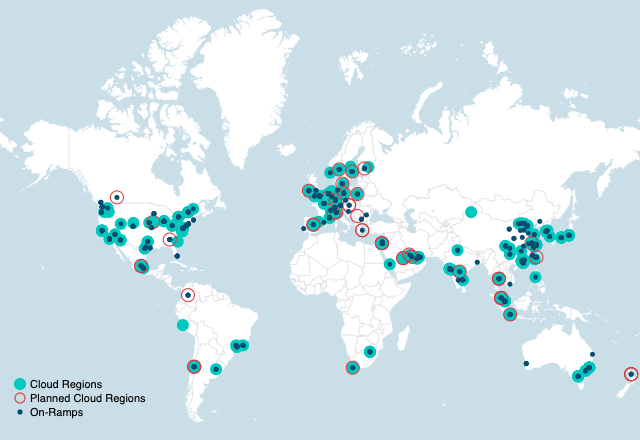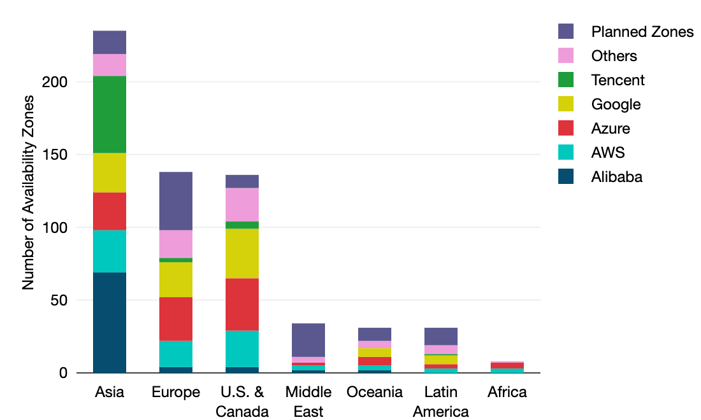Cloud services have become a critical component of many enterprises' data management. And how enterprises reach the cloud service providers' data centers has become an important issue.
Traditionally, the plain old internet sufficed. But there's more than one way to skin a cat.
Companies seeking better performance may peer with cloud service providers (CSPs), either through their network service provider (NSP) or directly with the CSP if the company has an autonomous system number (ASN) and meets the CSP’s peering requirements.
For better security, companies may instead choose to connect via IPSec VPNs, tunneling through the public internet. Still, other companies may have high-capacity requirements and business-critical applications in the cloud.
For these businesses, cloud services cannot be left susceptible to the performance of the public internet. For them, CSPs and their carrier and colocation partners offer dedicated links to CSP networks.
These links effectively extend an enterprise’s network into the cloud provider’s network, thus bypassing the public internet.
Global Cloud Data Center and On-Ramp Locations

Enterprise network managers have a wide array of service providers to choose from for a dedicated cloud connection service.
While enterprises can set up a link directly with the cloud provider, more frequently a third-party (think a carrier, colocation provider, or connectivity specialist) is used.
Selection of a provider often depends on the location of the enterprise WAN in relation to the cloud providers’ zones or data centers.
If a company has routers located within the same colocation facility as the cloud provider, it can often work directly with the cloud service provider to facilitate the direct connection between the networks.
Cloud On-Ramps by Top Metros
.png?width=775&height=393&name=Copyright_TeleGeography_cwi_csp_onramp_top_metros%20(1).png)
With a total count of over 250, Asia is home to the most in-service cloud zones. The United States and Canada follows suit with over 125 zones.
Together, these two regions account for about 65% of the world’s cloud data centers.
Together, these two regions account for about 65% of the world’s cloud data centers. The remainder are housed in Europe (19%), Latin America (5%), Oceania (4%), the Middle East (4%), and Africa (2%).
At the country level, China and the United States are the clear leaders, with close to 140 availability zones for China and 110 for the U.S.
Japan, Australia, and India round out the top five, but are home to only between 20 and 30 zones each.
Service Availability Zones by Region

This analysis was pulled from our Cloud and WAN Research Service.
Download the free executive summary to keep reading.
Patrick Christian
Patrick Christian is a Senior Research Manager with TeleGeography. He heads the Cloud and WAN Research Service. He also focuses on African and European markets specializing in international bandwidth markets and internet infrastructure, WAN services, terrestrial and submarine cable systems, and international voice traffic analysis.





